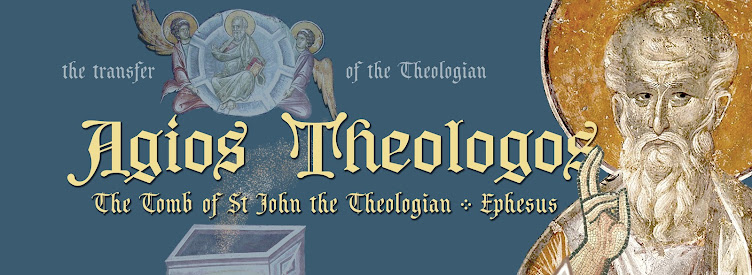Four kilometers from the Basilica of the Tomb of St. John the Theologian, within the archeological excavations of ancient Ephesus, lie the ruins of the famous Ephesus metropolis church dedicated to the Theotokos. Built in the early 5th century, it was 145 by 30 meters. This is where the Third Ecumenical Council took place in 431, led by St. Cyril of Alexandria. The council condemned Nestorius’ man-worshiping heresy, which separated the divine nature from the Son of God, and confirmed the dogma of Our Most Pure Lady as the mother of God (in Greek, Θεοτόκος - Theotokos – the “God-bearer”).
The dogmatic term Theotokos, which was confirmed during the fight against Nestorianism, is above all a Christological teaching: the Third Ecumenical Council defended the hypostatic union of the Son of God Who became the Son of Man, the God-man. Even though the entire council was focused on the defense of this Christological dogma, it indirectly pointed to the dogmatic confirmation of venerating Her who gave birth to God in the flesh. It follows that all those who oppose the term “Theotokos,” who reject the role of Our Lady, are heretics, because they reject the dogma of the Incarnation of the Word.
From this very ambon of the Ephesus metropolis church did St. Cyril of Alexandria declare the anathema on the Nestorianism:
“If anyone will not confess that the Emmanuel is very God, and that therefore the Holy Virgin is the Mother of God, inasmuch as in the flesh she bore the Word of God, let him be anathema!”
The Ephesus Council also confirmed the resolutions of the First and Second Ecumenical Councils, especially the Nicaean creed, and commanded that nothing “may be added to it nor subtracted from it.”
The Ephesus Ecumenical Council left us a precious confirmation of the patristic church teaching that the Most Holy Theotokos truly spent a part of her life, that which was not in Jerusalem, in Ephesus with St. John the Theologian. According to this tradition, the Most Pure Theotokos fled from Jerusalem to Ephesus in the year 43 AD during Herod’s persecution of the Christians (Acts 12:1-3). Before her most holy repose, Our Lady returned to Jerusalem, where her wondrous dormition and assumption took place.
It should also be noted that the metropolis in Ephesus was the first church in the world dedicated to the Mother of God. Its great relic was an icon of the Most Pure Theotokos in whose presence the holy fathers defeated the heretic Nestorius.
The Church celebrates the memory of the Third Ecumenical Council on the 9/22 September.
After
the final destruction of the metropolis church of the Theotokos in the 7th
century, the metropolis seat was moved to the Basilica of St. John the
Theologian’s tomb.


No comments:
Post a Comment